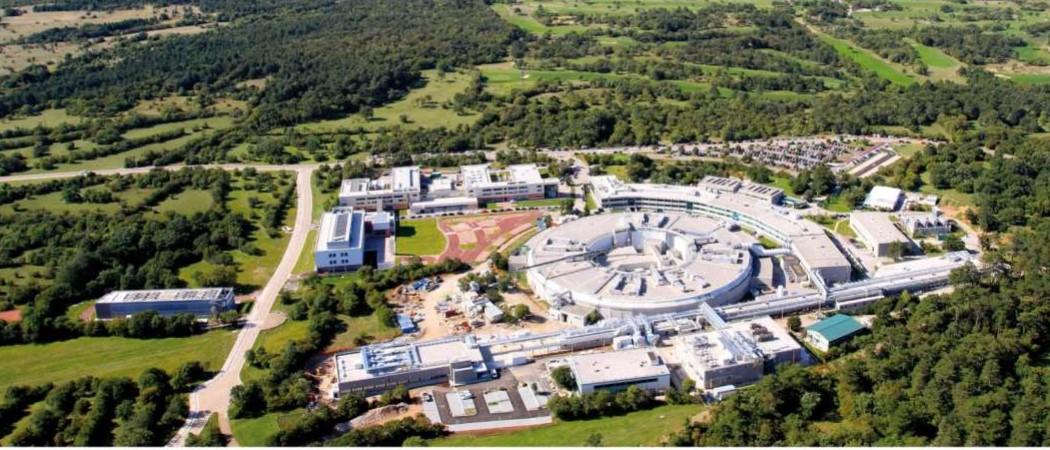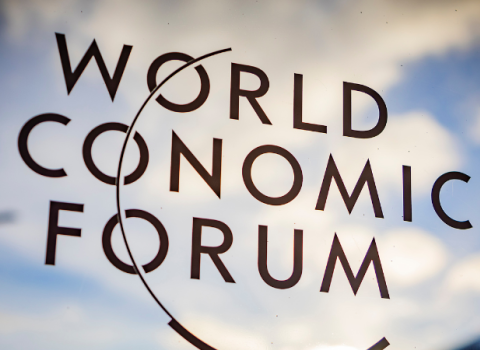Lockdown means more than half of European research infrastructures are closed, while the rest are running scaled back operations. Now they are looking for new ways to offer access to their beams, lasers and particle accelerators

The Elettra synchroton in Trieste. Photo: European Commission.
Lockdown is having a “profound impact” on projects, say the managers of large research infrastructures, as they rush to find ways of providing remote access to experiments and research data.
According to a survey by the Association of European-Level Research Infrastructures Facilities (ERF), the pandemic has strongly affected day-to-day practices in most European beamlines, lasers and synchrotrons.
Only one third of 28 facilities remained in at least partial operations when the pandemic broke out, while others had to shut down operations for a few weeks. Currently, nearly half are running partial operations.
At the end of April, only nine facilities were able to offer services to external users. Travel bans and new safety rules imposed by governments are preventing researchers from taking their samples to any facilities. Managers are trying to fill this gap by setting up new remote services.
“We can see that the effect of the crisis is very strong,” Jana Kolar, executive director, Central European Research Infrastructure Consortium (CERIC-ERIC) told Science|Business.
At present only a few instruments are able to analyse samples that are mailed in. For the rest, research infrastructures are changing their protocols and adding equipment to enable them to receive and analyse mailed samples.
“We all have to start thinking what the new normal type of interaction with our users will be,” said Andrew Harrison, CEO of the Diamond Light Source in the UK.
At least until the pandemic is halted by the discovery of a vaccine, travelling to and from research infrastructures will be less frequent. According to Harrison, the crisis is a good opportunity to “reduce the need to fly around the planet.”
Facilities are installing communications software and remote-controlled robots to enable experiments to be undertaken remotely and are adapting the instruments so that they are operated with fewer people on the site, as some projects currently require more than two people to operate beamlines. “We see this as an opportunity to introduce new services, to bring it to another level,” Kolar said.
Facilities in the CERIC consortium aim to continue to adapt to new working conditions, while carrying on operations to the greatest extent possible. “We want to put this in place within the next three months,” Kolar said.
Diamond Source was already offering remote access to about 45 per cent of projects, but is now working on adding new remote services, especially for measurements that “lend themselves to automatic low hands-on operation,” Harrison said.
However, not all research operations can be automated at the moment. Simulations of new manufacturing processes, bespoke measurements that require dedicated equipment and big experiments that involve large teams of researchers from companies and universities are difficult to handle remotely. But “with a bit of ingenuity we will start to build a wide array of conditions,” said Harrison.
Return to the new normal
CERIC started immediately looking into how its facilities would be able to welcome researchers and new projects during the pandemic. The consortium’s 50 instruments are scattered across eight countries, all of which have different lockdown and social distancing rules. While some facilities are still closed, most are now open and are starting to serve projects that are not focused on COVID-19.
Access decisions are made on a case-by-case basis and for projects where remote access is not possible, experiments are mostly being rescheduled to next year, said Kolar.
According to Harrison, if experiments will be delayed for too long, Diamond may reconsider whether they are still as relevant as when they were first selected, and could invite them back into open competition for future access.
At the moment there are no plans for European coordination on rules for access in research infrastructures to ensure facilities could soon be used at full capacity again. “There is no coordination,” said Kolar. “We have not observed any kind of attempts so far.”
The European Strategy Forum on Research Infrastructures (ESFRI), , an EU initiative to coordinate policies on research facilities, may look at this problem in the future. But, until then, members of the European Research Infrastructures Consortium (ERIC) will hold a general assembly with science ministers in member states and will discuss how facilities could align approaches to the new access policies.
Even though the UK's status in ESFRI will be uncertain after Brexit comes into effect, Harrison said facilities should share best practices and come up with common standards for remote access. “It makes every sense to do this together,” he said.
Less money to go around
The unfolding economic crisis will also have an impact on research infrastructures. Harrison admits money is going to be shorter in the future. “It is imperative on us to get back to as close as possible to 100 per cent operations,” he said.
But, in the end, the financial sustainability of research infrastructures comes down to the extent to which countries appreciate the value of basic science in dealing with the global health crisis and in contributing to new policies on greening the economy. “I think the research infrastructures will continue to be able to make the case that they are essential to tackle these challenges,” said Harrison.
Kolar believes research facilities should be able to address new challenges as priorities are changing. “Our sustainability model is built on the fact that we need to understand what governments want and deliver on that as well as possible,” she said.





 A unique international forum for public research organisations and companies to connect their external engagement with strategic interests around their R&D system.
A unique international forum for public research organisations and companies to connect their external engagement with strategic interests around their R&D system.